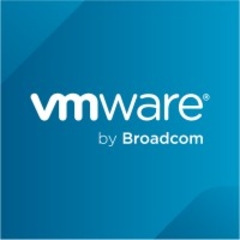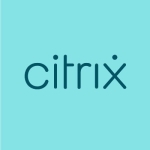Valuable Features
The most valuable feature is definitely the High Availability and the abstraction of MAC addresses from the hardware. Also, shared storage is definitely beneficial. Back in the old days when we had single storage, it was usually slow disks that were local to the machines, and once we moved everything over to the virtualization platform, we have the benefit of newer and faster disk arrays directly attached to the VMware system. It's made thing a whole lot easier to manager, particularly from a space point-of-view.
Obviously, SANs have been around for a while, but they used to be direct-attached and not shared among a number of hosts. We jumped from direct-attached SANs into VMware with shared SANs, skipping that extra part of the SAN world.
Improvements to My Organization
It brings everything together under one umbrella and allows a smaller organization without a separate administrator for disk, network, host, or server to have centralized, single-pane-of-glass management. It has a much easier interface than a lot of the other tools I've worked with and gives us a better centralization of services.
Room for Improvement
It seems like VMware comes out with something new every time I think how great it would be to have it. For example, they came out with Storage vMotion, although a lot of people haven't adopted it because some programs won't accept it. Also, with NSX they're working in the networking area, and I'd definitely like to see improvement there, such as integration with the cloud. We've got a customer for whom we're providing disaster recovery with vCloud Air, and there are some improvements could be made there as well.
We actually have two different vClouds -- one of the VMs to replicate to, and the other for the VMs to have Active Directory and a jump host for user connections. I'd like to see better vSphere integration with vCloud Air where they're seamless. This would be a big improvement.
Use of Solution
I've used it for somewhere around ten years. I started back three jobs ago, and basically we were using VMware to move some physical machines down to Atlanta from New Jersey, and so we chose vSphere. Our boss brought in a vSphere trainer and gave us a week long class on it before we got started, and then we used the convert tool, and we used another tool called PlateSpin, which was available back then. I don't even know if PlateSpin is still even in business, but I've P2V'd quite a few machines over the years.
Deployment Issues
We've had no issues deploying it.
Stability Issues
It’s absolutely stable for the past ten years. There have been a few bugs here and there, but I know that version 6 has changed the block-tracking bug which affected some of our Veeam customers. So vSphere has been very stable compared to other products. I currently work with another hypervisor and it's way behind vSphere. vSphere is a purpose-built hypervisor, which is more stable than an OS-based hypervisor.
Scalability Issues
One of the issues that I've always had with the scalability of VMware, and maybe this is another area of improvement, has been the fact that a lot of customers will buy a small environment, the very minimum. They'll buy two hosts even though we recommend a three-host minimum. When they do finally but more hosts, the processors have changed and they have to dumb down the newer processors using EVC. I'd, therefore, like to see VMware come up with a better way of handling newer hosts. I think that that would really allow more scalability.
Now, obviously a lot of people are moving to the cloud and scalability is a moot point, especially for smaller businesses. I have a customer for whom we're moving their environment into the cloud, and they'll be completely in the cloud next year with vCloud. This would eliminate the need to purchase additional hardware that may be incompatible because of processors. That also affects the scalability of vSphere.
Customer Service and Technical Support
I used to say that Cisco has the best technical support until I started working with VMware. I'd say now that there's no better technical support than VMware. Sometime it may take them a little bit of time to find the answer because they consult their team members, but that doesn't bother me. During that time I will have done my own due diligence and researching, but it makes me feel a little better that the answer wasn't obvious. A lot of times, though, they come right back with an answer right away. That says a lot.
Initial Setup
vSphere 5.1 was pretty difficult to set up with the introduction of SSO, but 6.0 has simplified that. It's very easy to set up and there are good guides for it. When I install it for my customers, I have them sit and watch so they can learn what's going on. We use it as a teaching opportunity.
Other Advice
Don't just buy the minimum because you need the best clustering capabilities, which includes having at least one host to be in maintenance mode while the other two are running the business.
I'd also advise that you purchase DRS and HA. For example, with DRS, you don't have to manually balance the load all the time and trying to keep the host balanced out.
Backup is obviously an essential part, so I always recommend Veeam, which works very well with VMware. A lot of people think they can do snapshots on their array and that will be their backup, but it's not. for DR, they can use vCloud Air to copy data offsite so they don't have to deal with traditional tape backup or disk-based backups. Plus, having backups offsite means that viruses like BitLocker won't affect your backups.
I'm very happy with VMware.
Disclosure: PeerSpot contacted the reviewer to collect the review and to validate authenticity. The reviewer was referred by the vendor, but the review is not subject to editing or approval by the vendor.


















That's correct. These days open source programs are more popular and they also provides features similar to paid products.